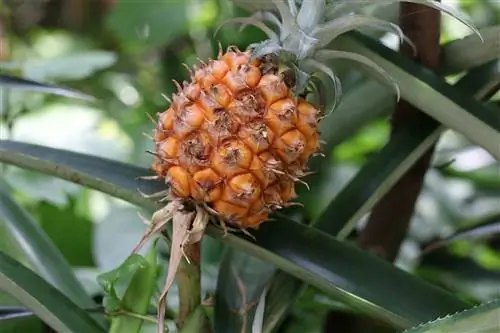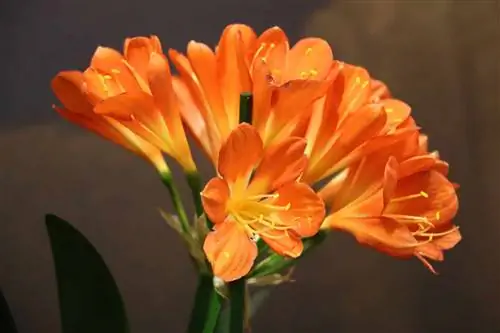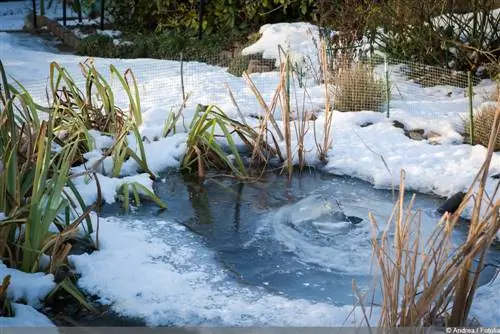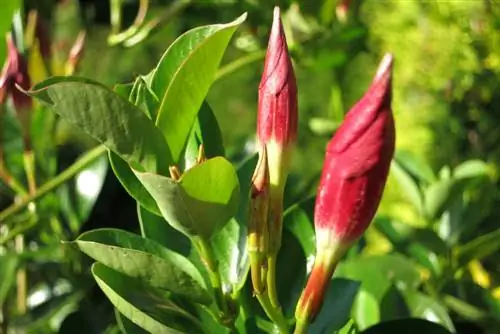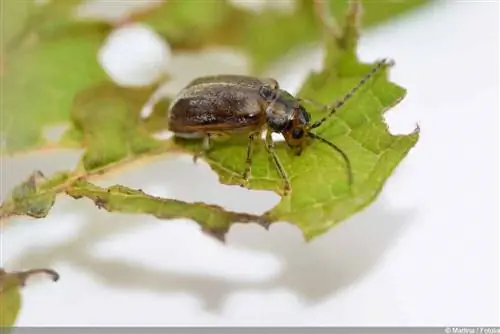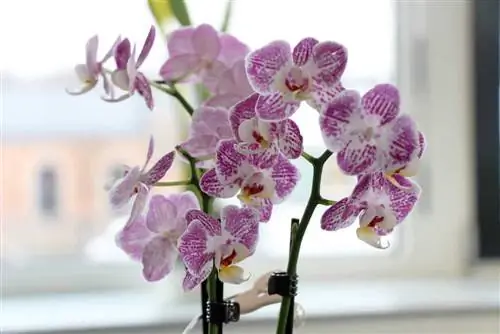- Author admin [email protected].
- Public 2023-12-17 03:39.
- Last modified 2025-01-24 12:45.
If the ornamental plants are grown in the garden or in pots and suddenly their heads hang, then the question quickly arises as to why this could be. However, this is usually caused by care errors that need to be checked. If remedial action is taken, most plants usually recover quickly.
Common Causes
If various ornamental plants such as daisies (Bellis perennis) or ornamental pineapples (Ananas comosus) let their heads hang, then there is usually a care error. This is usually due to too little water, but waterlogging can also be the cause. Correct watering in particular does not only depend on the plant, but there are other factors that are definitely related:
- Location
- Humidity
- Temperature
- Growth period

Location
Choosing the right location is crucial for the survival of your plants. Everyone has individual requirements that need to be understood. If it is too dark, the plant is less able to photosynthesize and dies, but if it is in direct sunlight, the heat can cause it to burn. Therefore, before you buy, try to find out which plants you can put in the bathroom with little light or on the terrace with strong midday sun.
- First place the plant in the chosen location
- watch the development of your plant
- sometimes just a few meters away from the light or shadow is enough
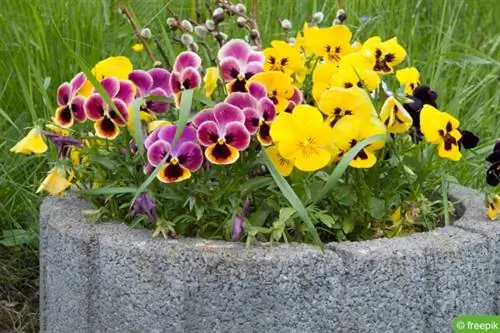
Note:
Acclimatise plants to strong sunlight slowly to avoid sunburn.
Plant evaporates the water
Plants evaporate water. However, this process always depends on the temperature and humidity in a room. The higher the temperature and the drier the environment, the more water the plants need. This also applies to balcony and patio plants in pots in summer when it is particularly hot and dry. A lack of water always results in a lack of nutrients because the roots cannot absorb the nutrients from the soil without water.
- Check the soil for dryness
- superficially dry, there may still be moisture in the ground
- therefore also check deeper
Pouring
If the plants hang their heads due to drought, further damage can be avoided by acting quickly:
- water large potted plants well
- until water can be seen on the collecting plate
- drain the plate after half an hour
- diving small pots
- to do this, place the pots in a cup of water
- Water should go over the edge
- if there are no more air bubbles, the root ball is soaked
- Remove the pot and let it drain

Note:
After watering, the plants recover within a few hours.
Fix waterlogging
In addition to dryness, plants grown in pots can also become waterlogged. This is the case when the soil is repeatedly watered even though it is still moist enough. If waterlogging is detected, quick action is required:
- Carefully remove the plant from the soil
- remove all soil from roots
- check for damaged roots
- cut these off with sharp and clean scissors
- Let the root ball dry thoroughly
- then place in fresh substrate in the pot
- water carefully only after a few days
Note:
If the roots were not damaged too much by the moisture, then these plants will recover quickly if they are no longer exposed to waterlogging in the future.
Repotting and fertilizing
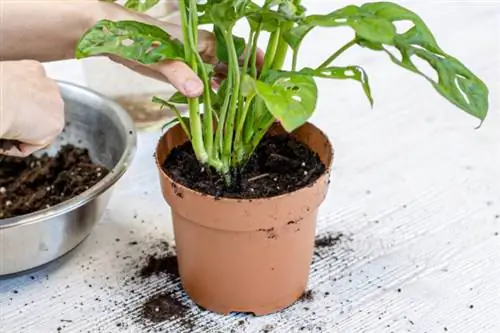
If plants hang their heads and it is not due to a watering error, then missing or too many nutrients can also be the cause:
- Check fertilizer doses
- possibly fertilize again
- repot at least every two years
- provide the plant with fresh, nutrient-rich substrate
Frequently asked questions
Can I assume that I can treat every plant the same?
If your decorative indoor or balcony plants are hanging their heads, then you have to take the different types of plants into account. Not every plant has the same need for water or nutrients. Accordingly, you also have to act differently when the plants hang their heads.
Which plants are suitable for watering?
Plants that require a substrate rich in peat or humus or that are in coniferous soil should be watered. These include, for example, azaleas (Rhododendron simsii). Once the soil has dried out, it will not accept the water during normal watering and it will roll off from above. This prevents the water from reaching the roots.
Why do the plants droop despite regular watering?
This may be due to the water quality. Water from the tap is often too hard. However, if rain or well water is used, which is much better for most plants, it is often simply too cold. This causes the soil temperature to drop sharply and root activity is impaired. The plants absorb less water and nutrients. You should definitely pay attention to a water temperature above 12° Celsius.
Is there an alternative to not planting houseplants in soil?
Many plants can certainly be cultivated hydroponically. This has the advantage that you don't have to constantly check whether the soil has dried out and needs to be watered again. A stick in the bucket shows how high the water level is and when it is time to water.

